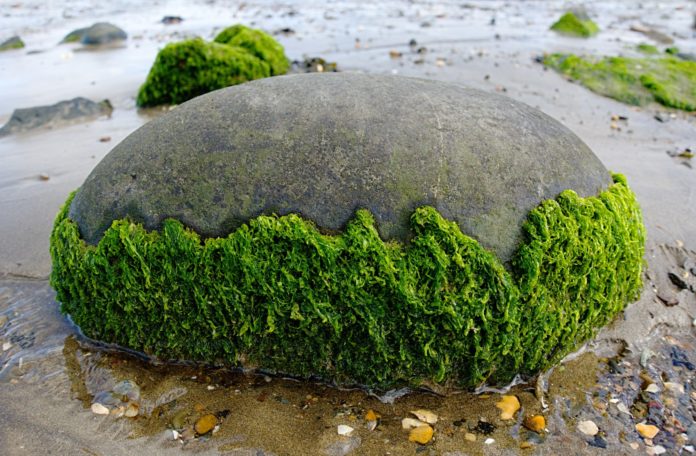Did you know the half the oxygen you are breathing right now comes from algae? While all algae are essential to life, not all algae are the same.
In fact, there are 7 main types of algae that create many variations of plant-like organisms that thrive in moist environments.
You certainly have seen algae before but it has a bigger purpose than making your fish tank slimy. Read on to discover all you could ever want to know about different algae.
Table of Contents
Chrysophyta (Golden-brown Algae) and Diatoms
Some algae types are single-celled organisms like diatoms and golden-brown algae that account for over 100,000 different types of chrysophyta species found in fresh and saltwater.
Diatoms are more common and consist of many forms of plankton enclosed in a transparent silica shell instead of a cell wall. Despite being less abundant, golden-brown algae grow much faster than diatoms. They are also considered to be micro-algae as they only have a diameter of 50 micrometers.
Euglenophyta (Euglenoids)
Although some types of pond algae like euglenoids can be found hiding in dark spaces, they survive off of photosynthesis. That is because they also eat high-carbon compounds and even other single-celled species.
They don’t have a cell wall rather a protein-rich protective coating of pellicle.
Pyrrophyta (Fire Algae)
If you see the ocean or lake turn red then you might want to avoid this area since it could contain two forms of toxic Pyrrophyta algae.
The first type, Dinoflagellates, causes a red tide effect as they gather in large formations that illuminate on the surface. The second type, Cryptomonads, is also poisonous and causes muscle paralysis if touched.
Chlorophyta (Green Algae)
These types of algae aquarium eaters are usually found in freshwater but can be spotted in the ocean as well. They can reproduce fast through photosynthesis and by eating other organic materials. Use a copepod to keep algae in your tank to a minimum as they can suffocate your marine life.
Rhodophyta (Red Algae)
You will found these algae clinging to reefs and other algae in tropical climates. As asexual creatures, they use monospores to germinate while coasting along with the current before attaching to a solid structure.
This type of algae has a cellulose wall containing carbohydrates that form into many species of seaweed.
Xanthophyta (Yellow-green Algae)
The lack of pigmentation of the algae’s chloroplasts causes it to appear lighter. They are also the most uncommon form of algae accounting for approximately 450 to 650 variations of algae.
Look for these small-gathering algae in saltwater, but they can also appear in wet soil and freshwater.
Paeophyta (Brown Algae)
These are the most plant-like and the largest species of algae and can be mostly seen forming into abundant seaweed and kelp. They have a main organ attached to a stalk as well as air pockets for floating.
Their tissue uses spores and gametes to reproduce as well as a photosynthetic organ.
The Importance of Various Types of Algae
All types of algae are needed as a vital link in the food-source chain for many other species. Their vastness also contributes to the world’s oxygen, so much so that we couldn’t live without them.
Be sure to download our app for more interesting articles on the go.



















